This post may contain affiliate links. For more information, please see our affiliate policy.
Challah is a traditional Jewish bread made every week for the Sabbath and for most Jewish holidays. It’s rich and decadent with a beautiful golden color and pillowy-soft texture. Whether you braid it into a long loaf or into a round, it’s sure to impress everyone at the table!
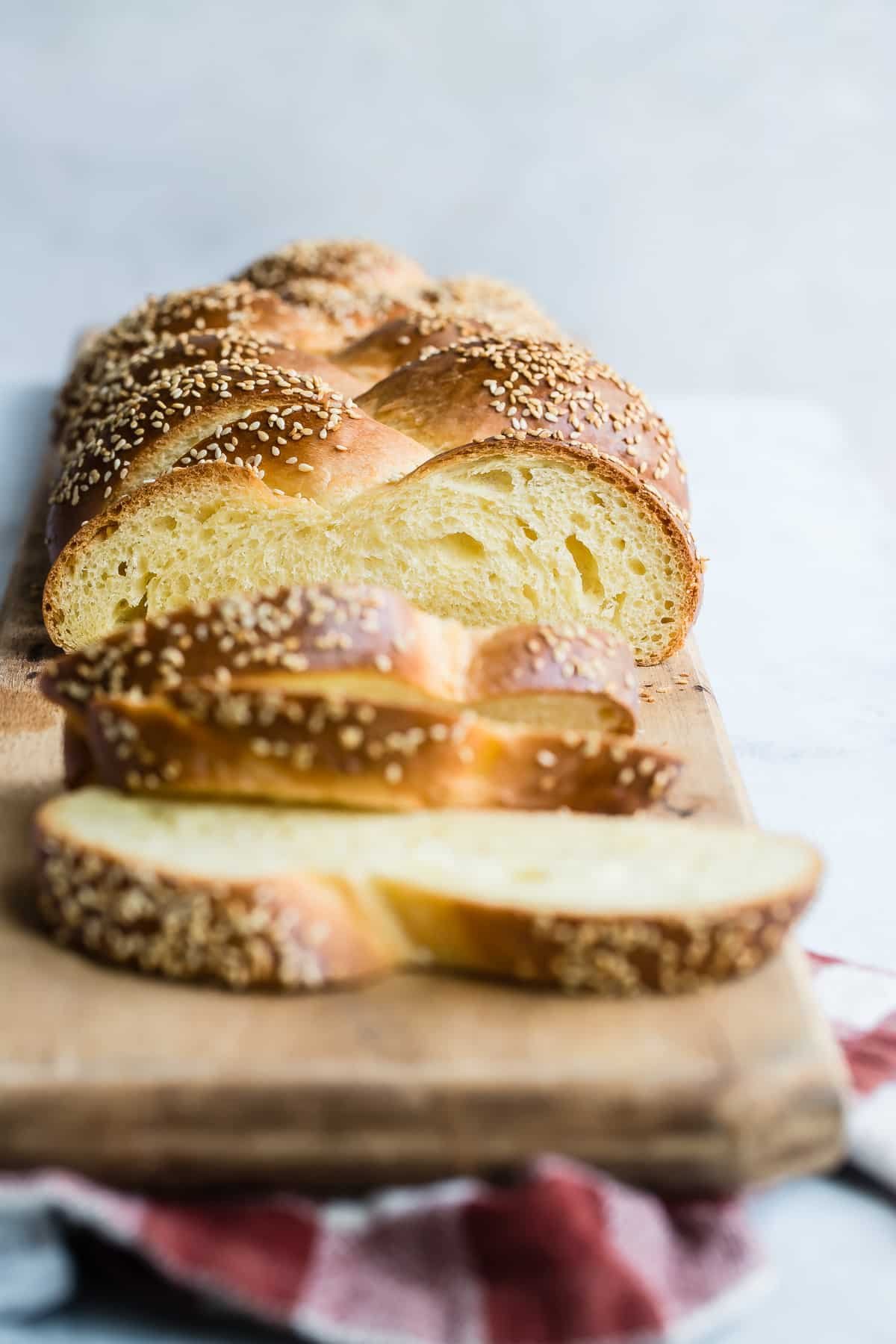
Challah is an enriched dough of Ashkenazi Jewish origin. It is popular at Shabbat (Sabbath) and at many Jewish holy days, a notable exception being Passover when no leavened bread products are consumed.
Challah can be braided into a loaf or into a circle. For Rosh Hashanah, the Jewish New Year, Challah is braided into a circle to symbolize the roundness of the year.
Regardless of the style of the loaf, Challah is typically made Kosher (without dairy) so it can be enjoyed with meat. If you are not keeping Kosher, feel free to substitute butter for the olive oil in the recipe below.
Table of Contents
Ingredients
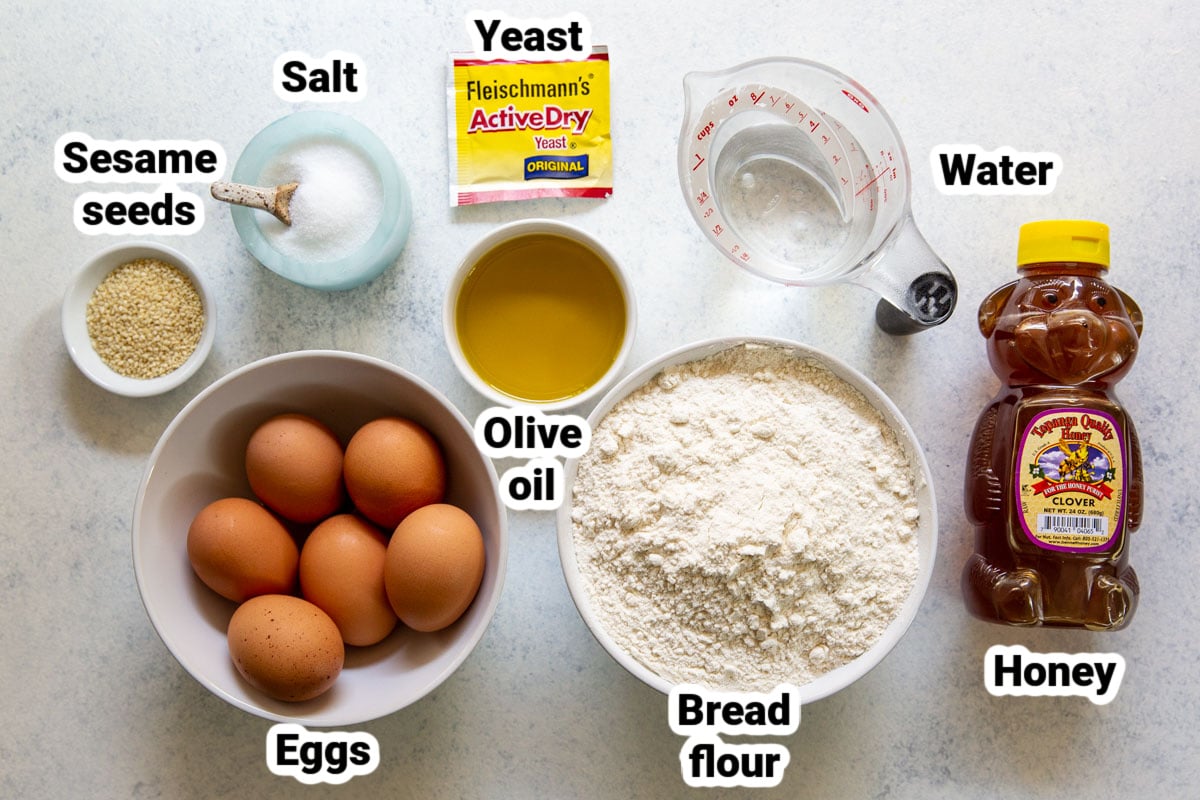
At a Glance: Here is a quick snapshot of what ingredients are in this recipe.
Please see the recipe card below for specific quantities.
Ingredient notes
- Olive oil: If you aren’t keeping Kosher, you can substitute 6 tablespoons softened butter for the olive oil.
Step-by-step instructions
- In a large measuring cup, and the warm water, yeast, and honey. Let the yeast soften (bloom) for 5 minutes.
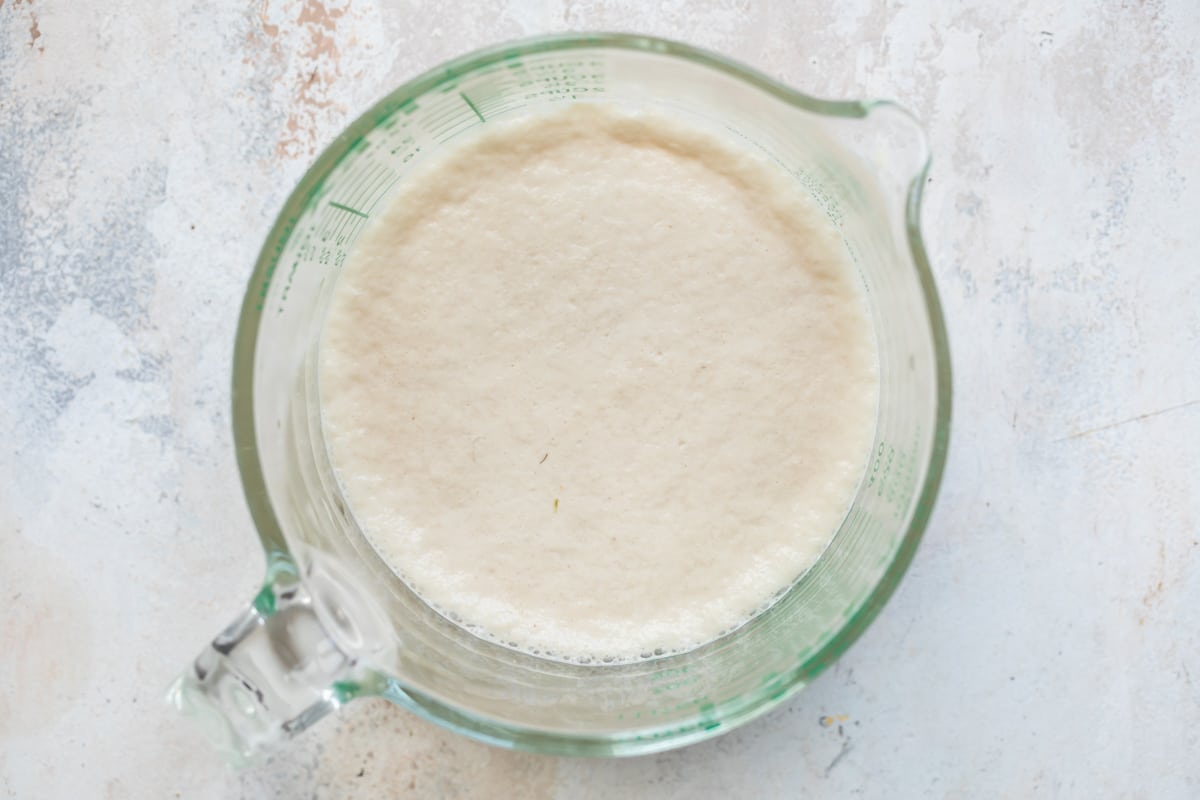
- In the bowl of a stand mixer fitted with the hook attachment, combine the flour, salt, butter, and egg yolks. With the motor running on low, slowly drizzle in the yeast mixture. Increase the mixer speed to medium and mix until the dough forms a ball and pulls away from the sides of the bowl, about 2-4 minutes. If the dough seems a bit too wet, add 1-2 tablespoons of flour.
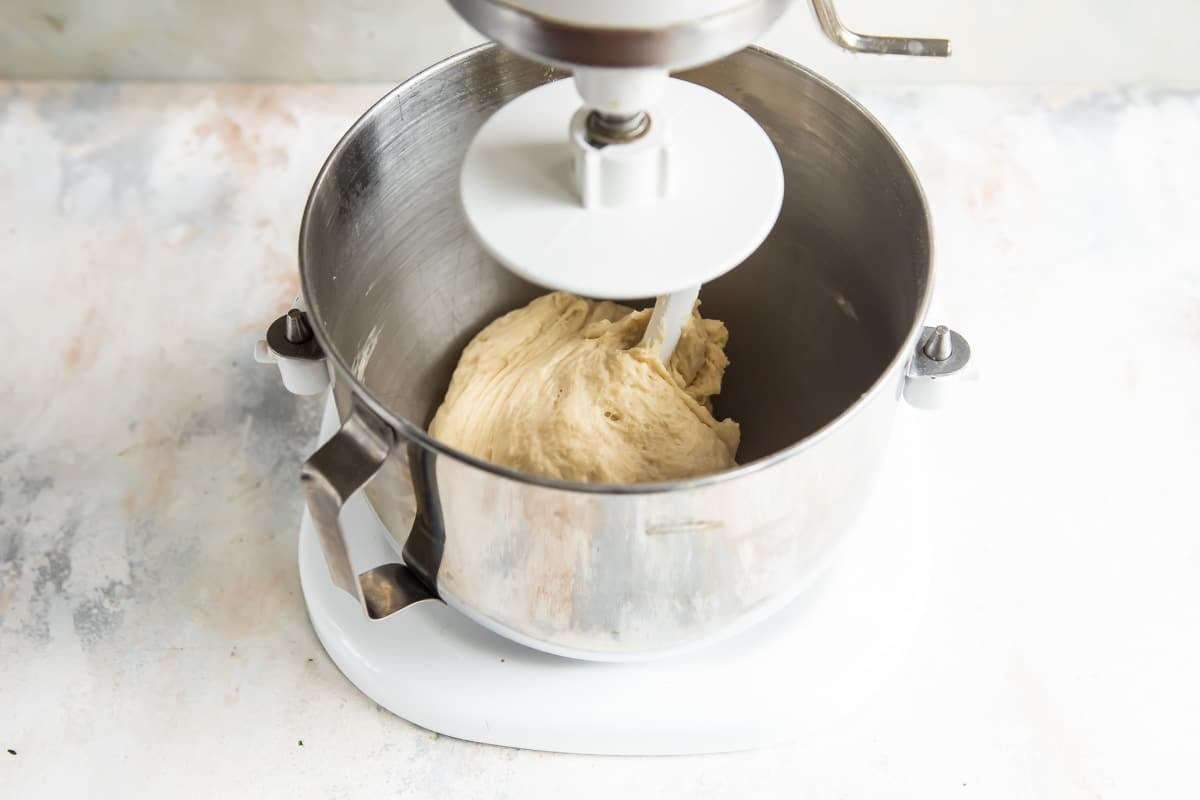
- Turn out the dough onto a clean work surface and shape into a ball.
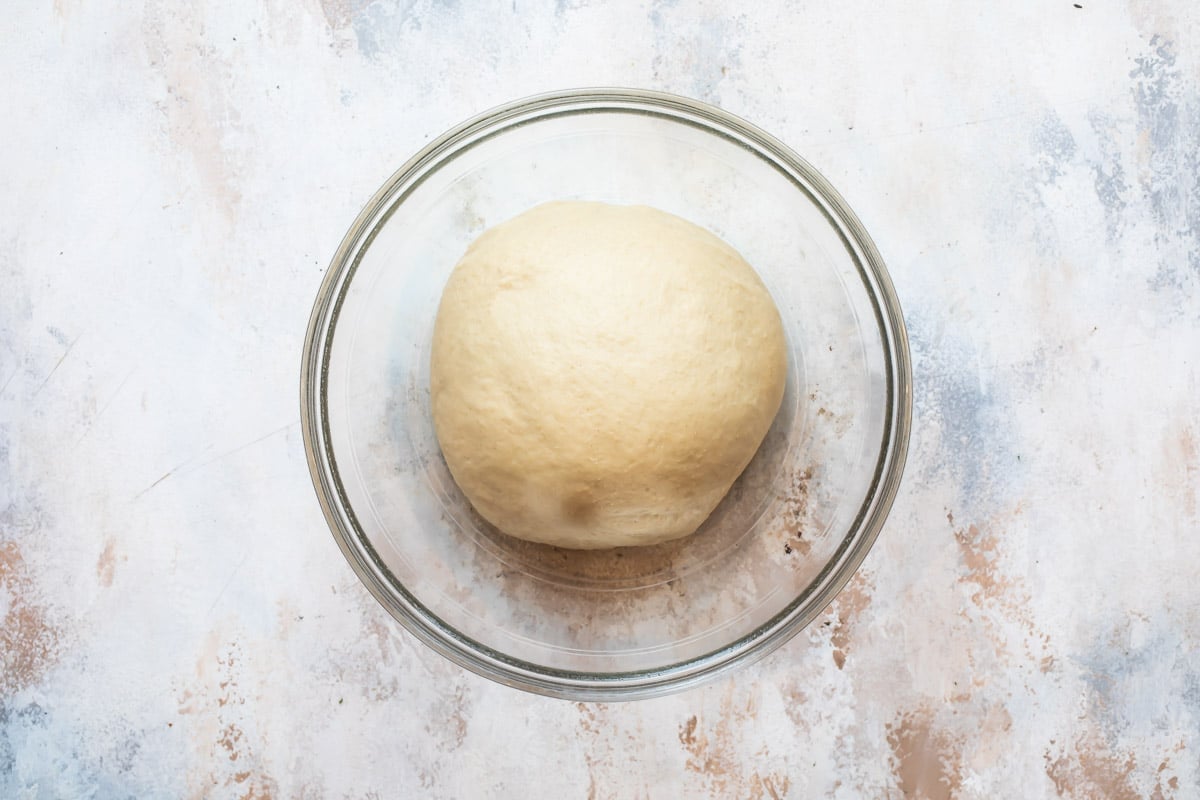
- Place into the same bowl, cover with plastic wrap, and let rise in a warm place (80 to 85 degrees, see notes) until doubled in size, about 1 – 1 ½ hours.
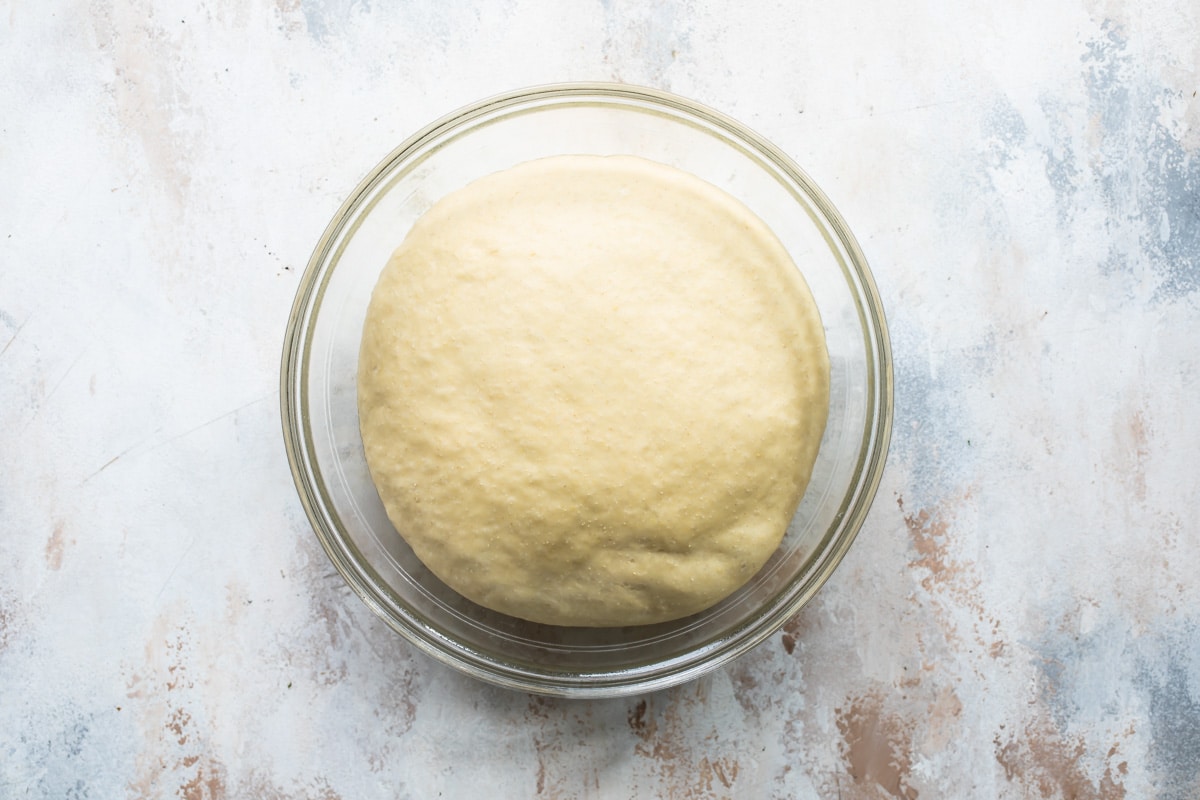
- Line a baking sheet with parchment paper. Punch down the dough and pour out onto a lightly floured surface. Using a bench scraper or sharp knife, cut the dough into 3 equal pieces. Roll each piece into an 18 inch log. If the dough starts to shrink back as you roll, cover with plastic wrap, and let rest for 10 minutes. Then continue to roll into logs.
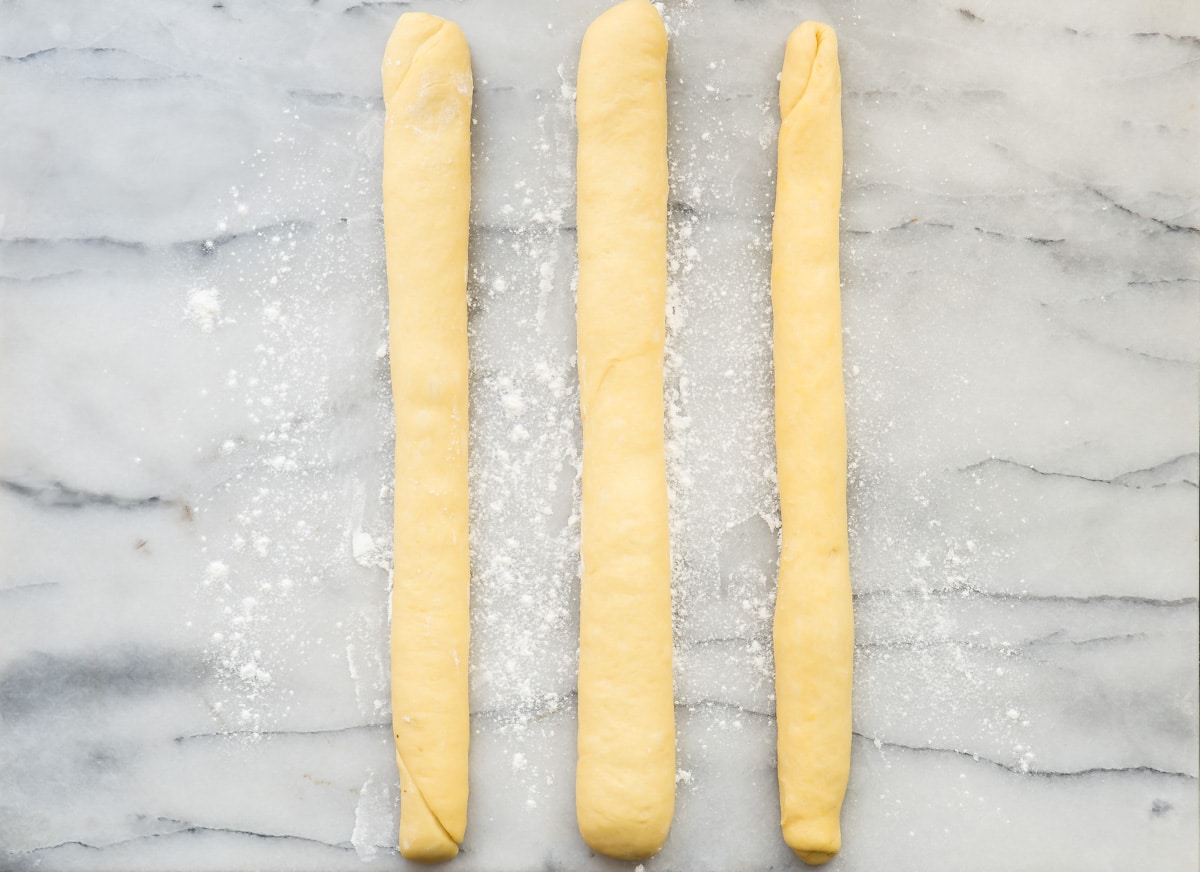
- Form into a three strand loaf by placing the three logs parallel to one another, but perpendicular to you. Starting at the top, pinch the three ends together.
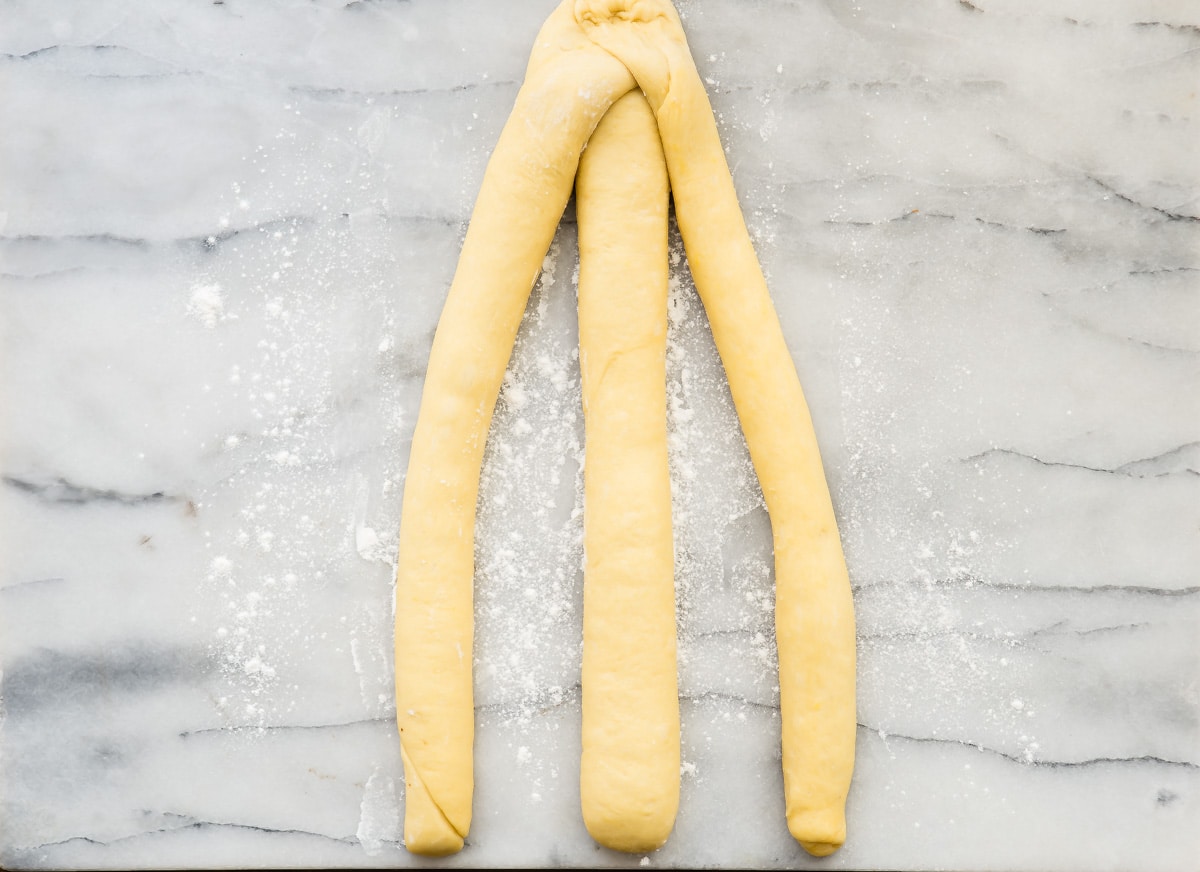
- Cross left strand over middle strand, then right strand over middle strand.
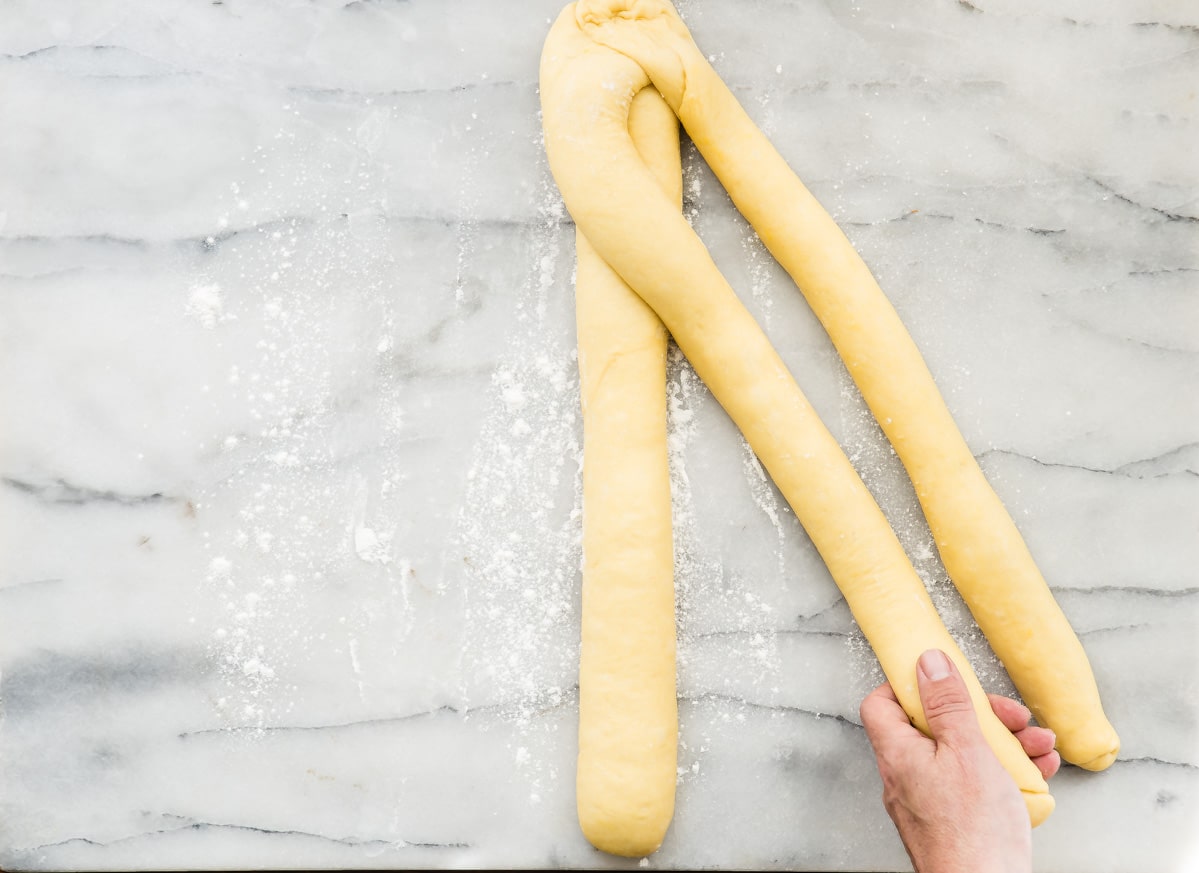
- Continue until fully braided, readjusting the strands when necessary.
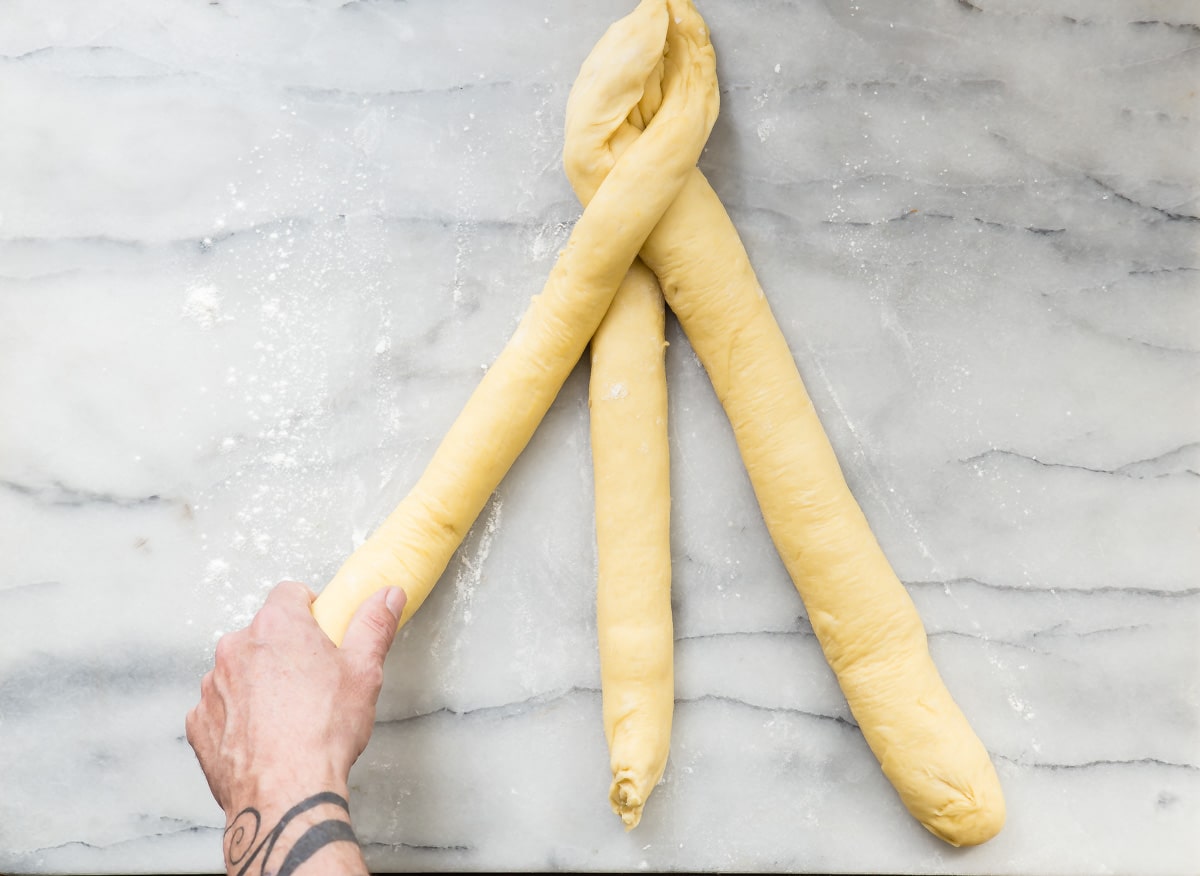
- Pinch the three strands together at the end and gently tuck under to create a round edge. Tuck under at the top of the loaf as well. Place the loaf on the prepared baking sheet, cover with a clean kitchen towel or plastic wrap, and place the baking sheet on top of the oven.
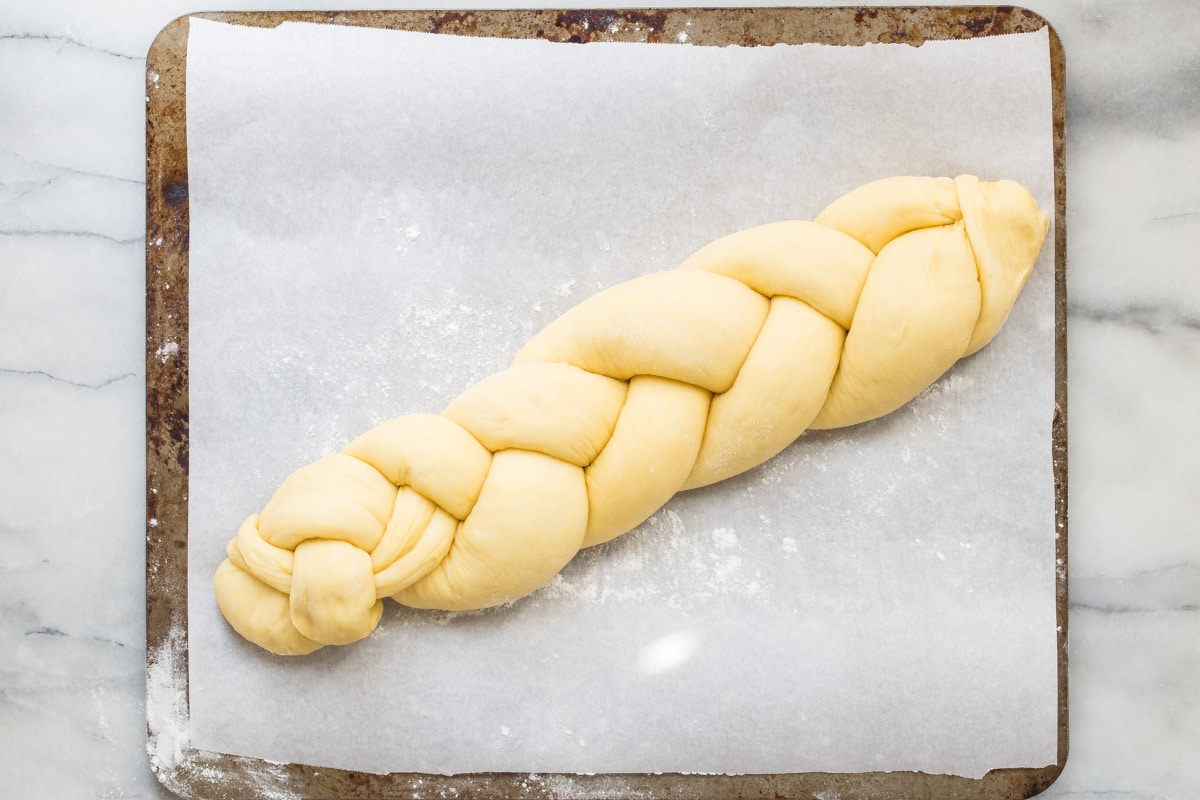
- Preheat the oven to 350 degrees and proof the shaped loaf until doubled in size, about 30 minutes.
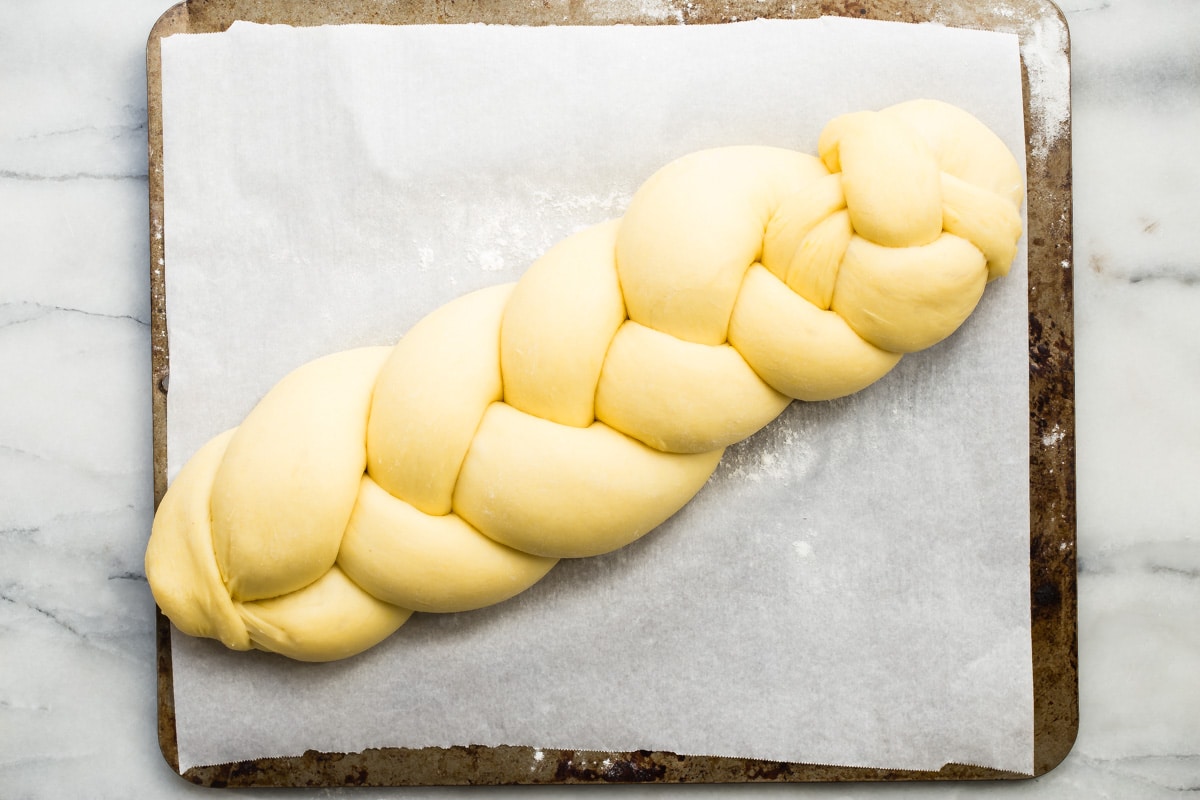
- When ready to bake, brush the entire surface of the loaf with egg wash and generously sprinkle with the seeds. Bake until deep, golden brown, about 25 to 30 minutes, rotating the baking sheet halfway through (the loaf should sound hollow when thumped). Cool completely on the baking sheet before serving.
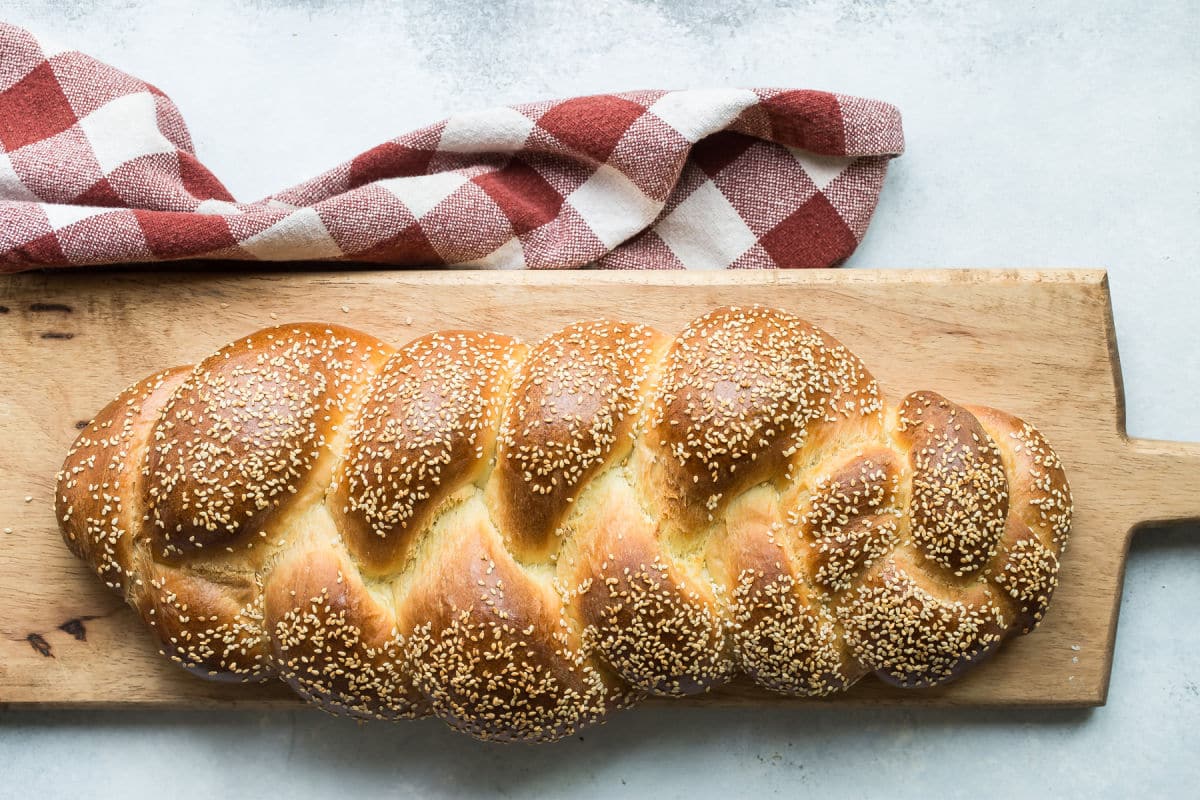
Recipe tips and variations
- Yield: This recipe makes 1 large loaf of Challah, about 1 pound in weight, enough for 8 large, thick slices.
- Storage: Store leftover Challah in an airtight plastic bag at room temperature for 4 to 7 days. Do not store it in the refrigerator as it will dry out.
- Freezer: Wrap, label, and date Challah and freeze for up to 3 months. Thaw at room temperature before serving.
- French toast: Leftover Challah makes the most amazing Challah French Toast. Try it with a dusting of powdered sugar and a squeeze of lime!
- How to proof dough: To create a warm environment ideal for yeast-rising, preheat your oven to its minimum temperature (for example 170 degrees or 200 degrees), but shut it off once the temperature reaches 110 degrees. Place your dough (in a greased bowl, covered with plastic wrap), on a baking sheet and in the oven. The oven temperature will drop when you open the oven door, but enough residual heat will remain that your dough should steadily rise.
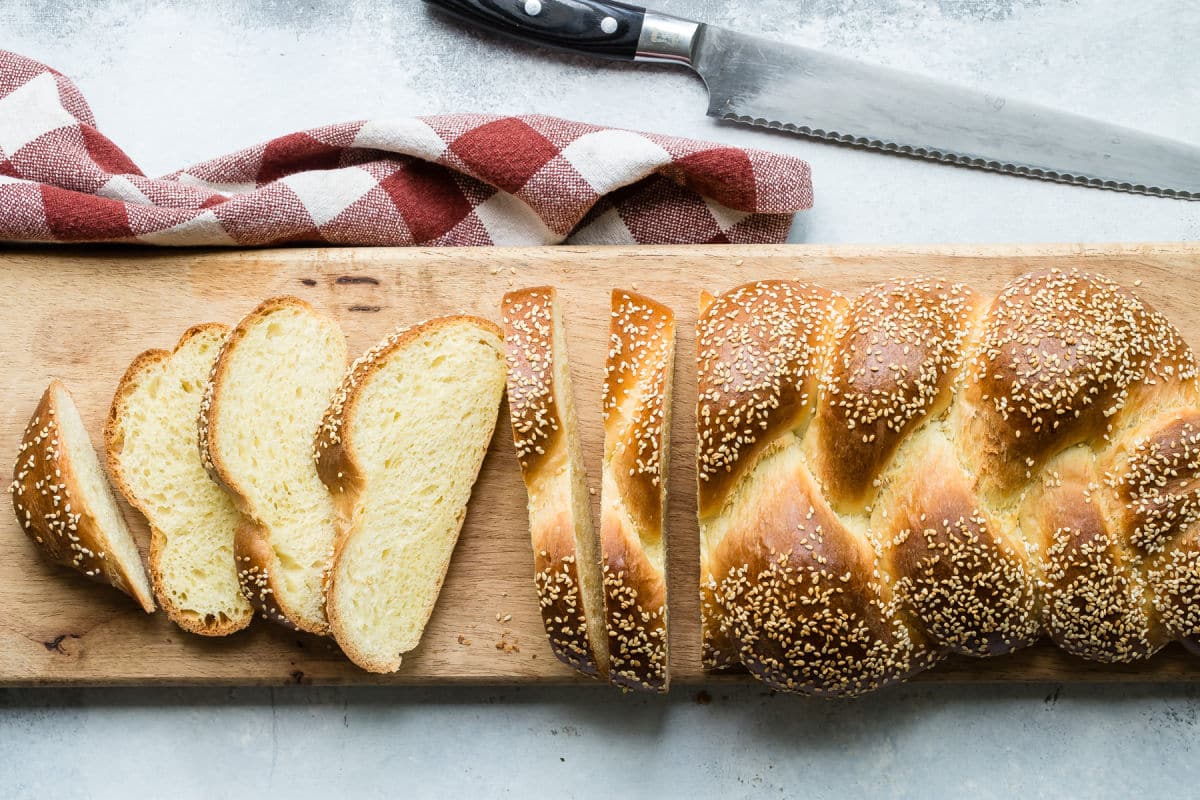
Recipe FAQs
Say it like “HAH-luh.”
Challah is derived from the Hebrew word meaning “portion.” It is taken from the Biblical commandment stating that a portion of your dough should be given to the Lord for a gift throughout the generations. To stick with tradition, many Jewish bakers and homemakers separate a portion of the risen dough (at least the size of an olive), wrap it in foil, and burn it in the oven while baking the bread.
Challah is actually made in various shapes and sizes depending on the occasion, but the most traditional is the three strand loaf. The strands intertwining one another are meant to symbolize love and each strand represents truth, peace, and justice.
Round loaves are baked for Rosh Hashanah, the Jewish New Year. Since a round loaf has no beginning and no end, it is meant to represent the continuity of a year. Raisins are sometimes added and the top can be brushed with honey to symbolize a sweet new year.
Challah, at its root, is an enriched dough. Unlike a traditional white loaf, this means the dough has been enriched with eggs, olive oil, and/or sugar. Our recipe for Challah features all three!
The most important difference is that Challah is part of Jewish culture, so it is Kosher. This means it is not made with dairy so that it can be eaten with all types of meats (Hello, beef brisket!) since Kosher tradition does not mix dairy with meat. Brioche, on the other hand, is French, so it is of course made with butter.
Join Us
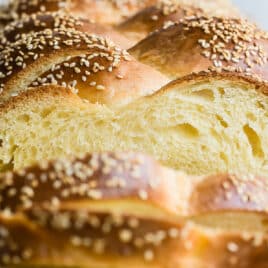
Challah
Ingredients
- 1/2 cup + 2 tablespoons warm water 110 to 115 degrees
- 1 package active dry yeast (2 ¼ teaspoons or 0.25 ounces)
- 2 tablespoons honey
- 3 1/2 cups bread flour
- 1 teaspoon Salt
- 6 tablespoons olive oil (see note 1)
- 5 large egg yolks room temperature
- 1 egg + 1 tablespoon water (egg wash)
- 2 tablespoons sesame seeds or poppy seeds
Instructions
- In a large measuring cup, and the warm water, yeast, and honey. Let the yeast soften (bloom) for 5 minutes.
- In the bowl of a stand mixer fitted with the hook attachment, combine the flour, salt, butter, and egg yolks. With the motor running on low, slowly drizzle in the yeast mixture.
- Increase the mixer speed to medium and mix until the dough forms a ball and pulls away from the sides of the bowl, about 2-4 minutes. If the dough seems a bit too wet, add 1-2 tablespoons of flour.
- Turn out the dough onto a clean work surface and shape into a ball. Place into the same bowl, cover with plastic wrap, and let rise in a warm place (80 to 85 degrees, see notes) until doubled in size, about 1 – 1 ½ hours.
- Line a baking sheet with parchment paper. Punch down the dough and pour out onto a lightly floured surface. Using a bench scraper or sharp knife, cut the dough into 3 equal pieces. Roll each piece into an 18 inch log. If the dough starts to shrink back as you roll, cover with plastic wrap, and let rest for 10 minutes. Then continue to roll into logs.
- Form into a three strand loaf by placing the three logs parallel to one another, but perpendicular to you. Starting at the top, pinch the three ends together. Cross left strand over middle strand, then right strand over middle strand. Continue until fully braided, readjusting the strands when necessary.
- Pinch the three strands together at the end and gently tuck under to create a round edge. Tuck under at the top of the loaf as well. Place the loaf on the prepared baking sheet, cover with a clean kitchen towel or plastic wrap, and place the baking sheet on top of the oven.
- Preheat the oven to 350 degrees and proof the shaped loaf until doubled in size, about 30 minutes. When ready to bake, brush the entire surface of the loaf with egg wash and generously sprinkle with the seeds.
- Bake until deep, golden brown, about 25 to 30 minutes, rotating the baking sheet halfway through (the loaf should sound hollow when thumped ). Cool completely on the baking sheet before serving.
Notes
- Olive oil: If you aren’t keeping Kosher, you can substitute 6 tablespoons softened butter for the olive oil.
- Yield: This recipe makes 1 large loaf of Challah, about 1 pound in weight, enough for 8 large, thick slices.
- Storage: Store leftover Challah in an airtight plastic bag at room temperature for 4 to 7 days. Do not store it in the refrigerator as it will dry out.
- Freezer: Wrap, label, and date Challah and freeze for up to 3 months. Thaw at room temperature before serving.
Nutrition
Meggan Hill is a classically-trained chef and professional writer. Her meticulously-tested recipes and detailed tutorials bring confidence and success to home cooks everywhere. Meggan has been featured on NPR, HuffPost, FoxNews, LA Times, and more.
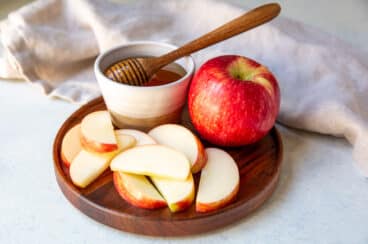

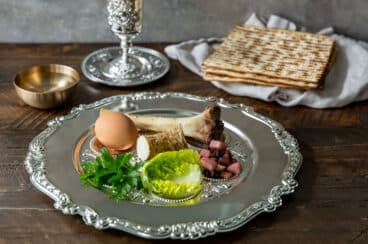
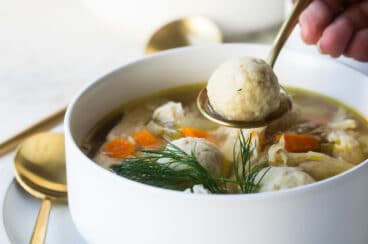
Meggan, I have been wanting to make Challah for years. I love challah. You have given me the courage to attempt. I am not Jewish, do not keep kosher. Question, what is your preference, butter, vegetable or olive oil? Thank you!!
Hi Pixie! I love it with butter, olive oil is a close second. I hope you enjoy making it! Please write if you have anymore questions! – Meggan
This recipe sounds wonderful and can’t wait to try it! I don’t have a stand up mixer. How long do you recommend to kneed by hand? Thanks!
Hi Kate! The goal would be to knead it is smooth and elastic, and as you’re kneading, it will pull away from the board or surface. I believe it would be about 10 minutes, but it is just an estimate. I hope this helps! Enjoy! – Meggan
So if you’re making it with butter, it’s a brioche, not a challah. As you said, that’s the difference: brioche is made with butter, challah is not. This recipe is for a plaited brioche. It’s not a matter of the baker being kosher or not, it’s what’s in the recipe–a challah, by definition, uses a vegetable fat while brioche uses butter.
Hi Scott, thank you for the comment. There is a little bit more to the process to make brioche, where it is refrigerated overnight before being baked, unlike challah, but in essence yes. I do mention the use of butter in the post, and there is a note to substitute vegetable oil or olive oil. I hope you enjoy! Thanks again- Meggan
What temp do you bake this bread?
Hi Bully, this bakes at 350 degrees for 25-30 minutes until deep golden brown. – Meggan
I like the recipe, but want to clarify something important here.
Most butters available are certified kosher. There is a sign on the package certifying it. Bread baked, by and in of itself is kosher, regardless of the use of butter or vegetable oil. Below, however, is the difference to observe, when making Challah.
Challah made with butter is made with a dairy product. Therefore cannot be eaten with a meat dish. It can only be used with a dairy/non-meat dish.
Challah made with vegetable oil is considered “pareve”, meaning it’s neutral and can be used with any kind of dish.
Michael: bread baked with butter is a special case; it isn’t kosher. See, e.g.,
https://oukosher.org/btus/2015/12/14/keeping-the-king-of-the-table-bread-kosher/
I have been making homemade bread for nearly 25 years, here are some tips I have learned. To proof your dough, before you start mixing the dough TURN ON THE OVEN LIGHT this will heat the oven too 110 F, place dough in bowl & place in warm oven, this works for Me every time. I also have found that if the bread is left on the baking sheet to cool completely that it has a tendency to go soggy. I always cool my bread on a wire rack.
thank you for this very helpful tip. my oven was too hot and it started to “bake” the dough in the first rising. Ugh! i had to throw it away. to get the oven temperature to the right level for the rise has been challenging! I will try your trick to just use the oven light. Brilliant! THanks again, Jim B.
Jacqueline S.
Another beautiful recipe!
I appreciate all of your advice 🙂 I am going to give this a try when I get home from my trip to Japan 🙂